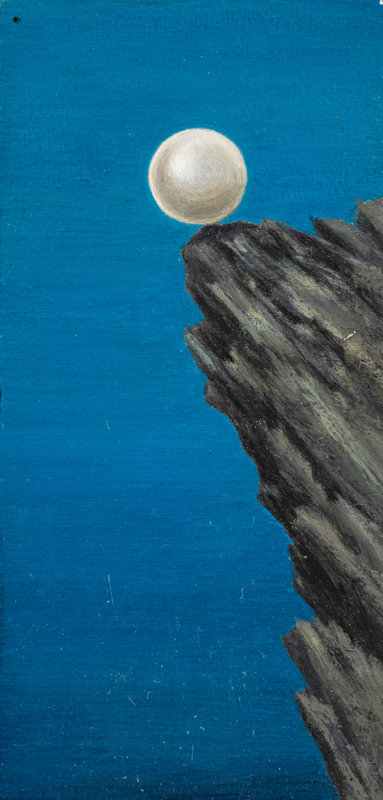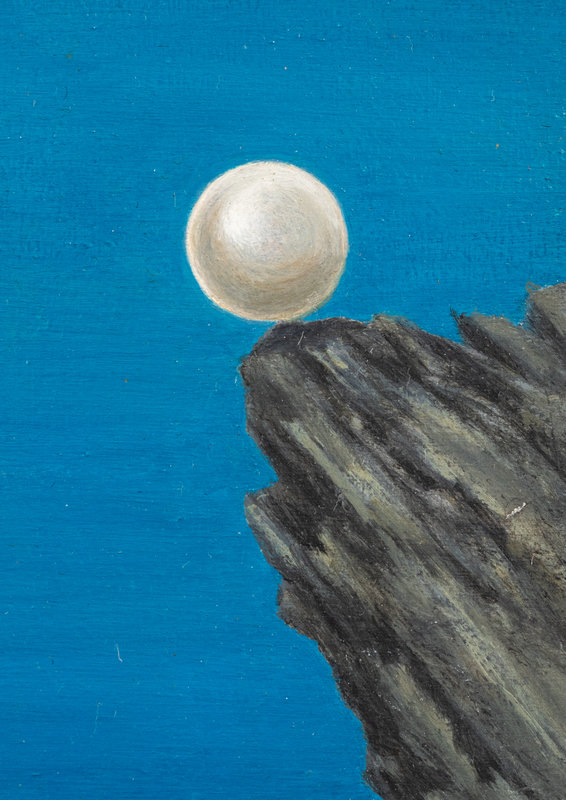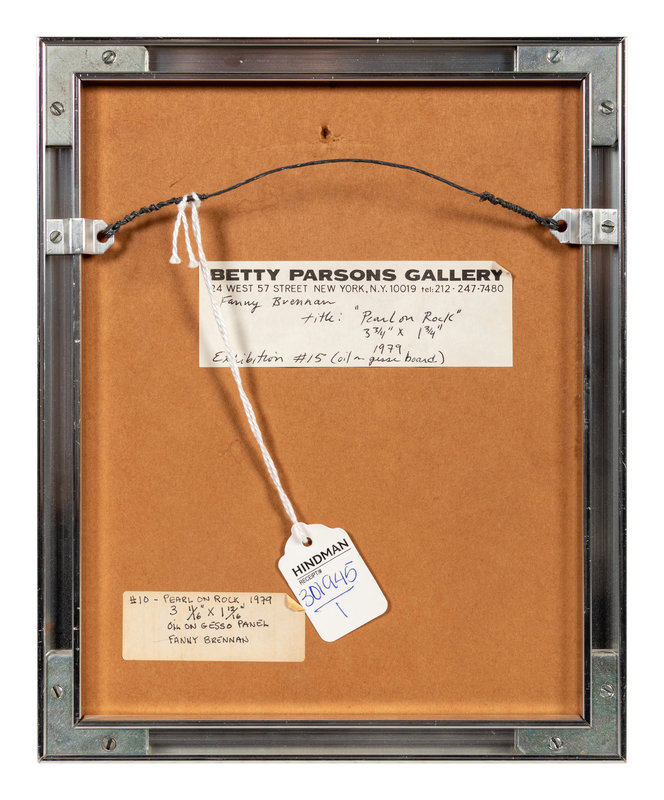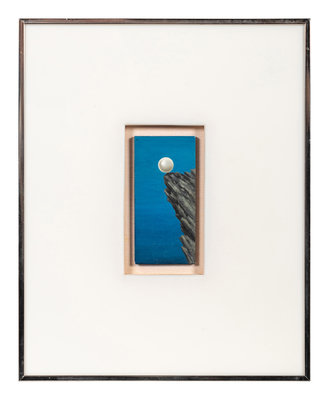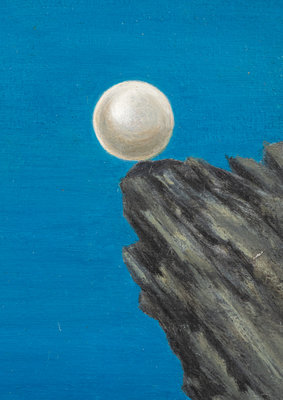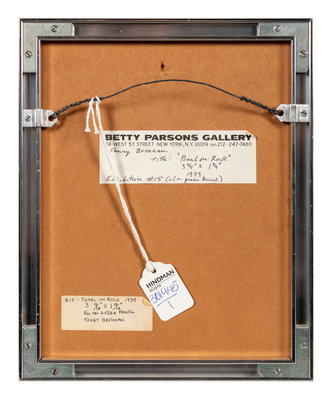Fanny Brennan
(French/American, 1921-2001)
Pearl on Rock
, 1979
Sale 1058 - Post-War & Contemporary Art
Sep 28, 2022
10:00AM CT
Live / Chicago
Own a similar item?
Estimate
$2,000 -
4,000
Price Realized
$12,500
Sold prices are inclusive of Buyer’s Premium
Lot Description
Fanny Brennan
(French/American, 1921-2001)
Pearl on Rock
, 1979oil on gesso panel
3 3/4 x 1 3/4 inches.
Provenance:
Betty Parsons Gallery, New York
Lot Essay:
A Small Wonder
“They were always trying to get me to fill the entire page of drawing paper. I only wanted to make very, very small pictures.”
- Fanny Brennan, describing her time at the Atelier Art et Jeunesse
Fanny Brennan (nee Francis Lee Myers) (1921-2001) was a painter best known for her capricious contributions to the surrealist movement. Her small-scale reflections combining the domestic with the magical (mostly done from her bathroom, the place she deemed most ideal for a studio) never measured more than six square inches. Hindman is pleased to offer Pearl on Rock, an excellent example of her unfairly overlooked oeuvre – the quietly domestic turned both graceful and mystifying, distilled from her life-long collection of captivating experiences.
Born to American expatriates in France in 1921, Brennan was the daughter of Richard and Alice Lee Myers, socialites at the center of the Parisian art scene. The Myers were close friends with jazz-age patrons Sara and Gerald Murphy, as well as Scott and Zelda Fitzgerald, who was said to have drawn his inspiration for The Great Gatsby and Tender is the Night from their social circle as they raised their children together on the French Riviera at the home they dubbed Villa America.
Brennan went on to study at the noted Parisian art-training program, Atelier Art et Jeunesse, defying social customs by refusing to wear a hat and aggravating her professors with her hesitance to stray from a miniature scale. A spirited personality, she was asked to leave her all-girl boarding house after calling the concierge a cow and was known for her frequent visits to the Café de Flore. There, she taught Picasso to play Chinese Checkers, befriended Tristan Tzara, and rubbed peanut shells into Giacometti’s hair – an act that wouldn’t deter him from painting her portrait. The “girl painter,” -- as Mondaine and noir novelist Patricia Highsmith would call her -- was getting an education like no other, until the war forced her stateside.
Back in New York, Brennan found work at Harper’s Bazaar and the Metropolitan Museum of Art, while the up-and-coming gallerist Betty Parsons included her paintings in two Wakefield Bookshop shows. The war continued to take center stage and Brennan was drawn back to Europe to help, taking a job with The Office of War Information and eventually marrying its Chief of Graphics and Exhibitions.
Then, she did something almost unthinkable – Fanny Brennan stopped painting for almost 20 years. The Brennans bounced between New York and Europe, with Fanny raising two children and caring for their aging parents. When her boys reached adulthood in 1973, she was finally ready to return to the fantastical world she had created.
With Brennan back to painting, Betty Parsons – now the owner of the eponymous Betty Parsons Gallery – immediately presented her work in several exhibitions, among them aptly titled Small Paintings and Still Life. Parsons, a dealer, collector, and artist herself, was one of the most important figures in American avant-garde, offering early-career representation to Ellsworth Kelly, Robert Rauschenberg, and Mark Rothko, among others. Each of Brennan’s paintings took one month to complete, and Brennen kept Sundays for rest and entertaining. Among the archived gallery records are notes from clients, urgently wondering if they had missed Brennan’s new pieces and enclosing checks as assurance. Upon the closure of the gallery in 1983, Brennan moved to Cole Kerr Gallery, eventually publishing Skyshades, a retrospective book of sixty paintings that was, appropriately, quite small.
Her paintings were insular reflections of a combination of the normal (buttons, safety pins, pearls, books) and the magical (a needle piercing the ocean, a landscape in a nutshell, cutting through a cloud with scissors). Pearl on Rock, 1979 is the summation of what critic Calvin Tompkins would call “convincing and unsetting”: a precious gem precariously atop a rock without regard for gravity, harshly and almost ominously contrasted in their realism, finely detailed with great mechanical control at a size suitable for installation above a dollhouse couch. Her subjects were always inanimate and her titles always straightforward, though frequently set in fantasyland. They could be whimsical and jovial, or tongue-in-cheek reflections on domestic value and escapism, but either way the viewer must look closely.
It is in this uneasiness that a comparison can be found between Fanny Brennan and her contemporary surrealist, Gertrude Abercrombie. Both women participated in a largely male-dominated movement, they each crafted meticulous yet disorienting realities in their work, almost inside jokes existing solely in an ethereal otherworld. There are similarities in their subject matter as well: familiar symbols and glowing objects reappearing, like characters setting up for another scene in a fever dream. Parallels also develop in their social influence: in Chicago, Gertrude entertained jazz legends from her dilapidated Hyde Park mansion; in New York, Brennan (a close friend of Julia Child) hosted what New York Magazine would call “four-star lunches” for her ever-evolving coterie. These associations and devotion to the arts would be tenderly noted in each of their obituaries.
With the art world only now breathlessly catching up to the brilliance of Abercrombie’s career, it is hopefully now Brennan’s turn to reclaim her well-deserved spotlight, as the work of both women was quietly overshadowed in the surrealist cannon.
Condition Report
Auction Specialist
